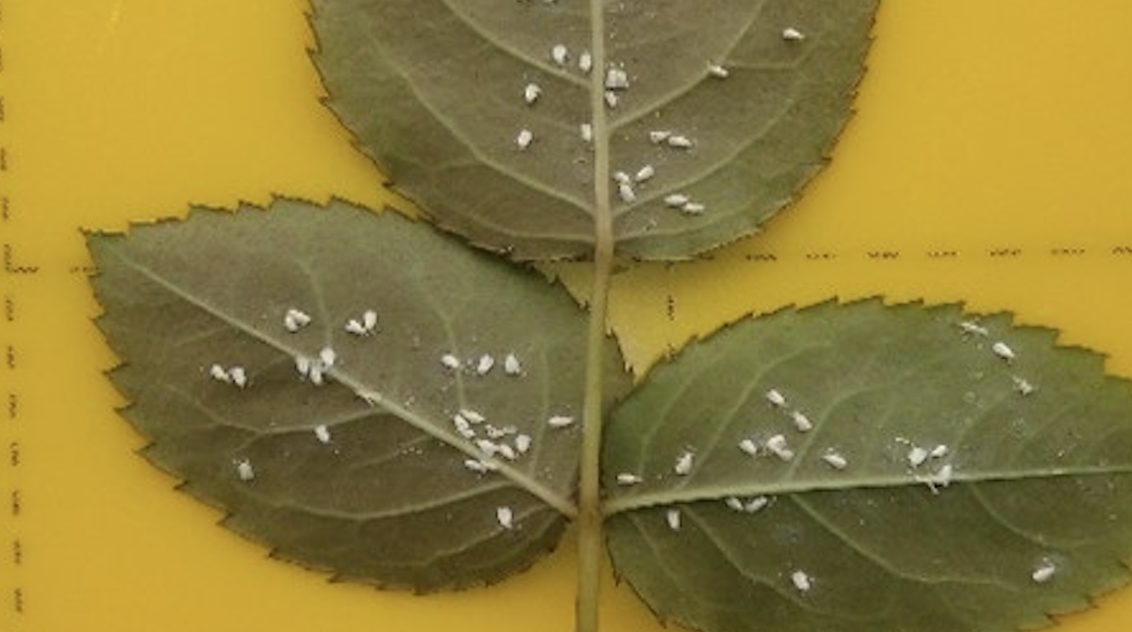Tips on whitefly control
Whiteflies, Aleyrodoidea
Whiteflies are common pests of a wide range of plants. The three main types of whitefly pests found in Kenya are:
- Trialeurodes vaporariorium (glasshouse whitefly)
- Alerodes brassica (cabbage whitefly)
- Bemisia tabaci (sweet potato or tobacco whitefly) - which is a notifiable pest
Damage
Whiteflies suck sap from plants and reproduce very fast under favorable conditions. Uncontrolled, whitefly can kill a plant by direct feeding, loss of leaf quality and water loss.
Honeydew
Larval instars produce vast quantities of honeydew during feeding which spreads on lower leaf surfaces. Up to 2,000 nymphs may be found on a single bean leaf, each capable of producing 20 drops of honeydew in an hour. Sooty molds grow on this sugary solution. Although honeydew helps parasites locate the whitefly, excessive amounts make it difficult for tiny parasitic wasps, such as Encarsia, to walk on these surfaces. Whitefly larvae have developed a feature called a lingula, which they use to flick away annoying levels of honeydew!
Silver leaf - Bemisia is responsible for silver leaf in marrow and leafy crops such as herbs and lettuce. Entire crops can be destroyed by silver leaf.

Whiteflies nymphs and adults
Virus transmission
It is important to distinguish between the two whitefly species above because Bemisia is a more efficient transmitter of virus diseases, including the devastating tomato leaf curl virus. Bemisia also has a very wide host range. The ‘B’ strain of Bemisia (also known as poinsettia strain) has phytotoxic saliva, which causes damage. Often viruses are associated with specific crops because the vector has specific feeding habits. However, the B strain of Bemisia can adapt to almost any plant species which means that a virus normally associated with a specific plant could appear in other crops. Females are better vectors than males.
Resistance
Most of the B strain has increased fertility and a strong tendency to develop resistance to pyrethroids, organophosphates and carbamates. Bemisia is known to respond to excessive pesticide programs by laying more eggs and producing more female offspring. Chemical control of whitefly fails eventually because of over reliance on pesticides. Worse still, is that resistance is thought to be ‘stable’, in other words, a chemical does not recover its effectiveness after a period of non-use.
Integrated Pest Management
Developing an IPM strategy will involve adopting techniques that permit a reduction in pesticide
applications without jeopardizing the profitability of the crop. Strategically, IPM is the only sustainable way to protect a crop from whitefly because of the ease with which resistance to chemicals develops and the threat of virus epidemics.
1. Physical Controls
Importing whitefly eggs or scales on rooted cuttings is an important source of infestation. Screening cuttings for infestations is difficult and time consuming. In addition, if the propagator has been over relying on pesticides for control, the whitefly may be resistant to chemicals and the grower could also be importing resistant populations onto the farm. Physical controls, which are not phytotoxic, are a considerable advantage since the pest cannot develop resistance to physical controls. Their effect is strictly limited to the sprayed area as it kills by contact action. Good cover is essential.
- Petroleum oils
Dipping poinsettia cuttings in petroleum spraying oil at 0.5% concentration, as a single dip, gives excellent control (over 85%) of eggs, scales and pupae of Bemisia. It is economical and safe. However, phytotoxicity tests, particularly in high temperatures should be carried out before wide scale use.
- Starch dextrins
Other physical controls such as the use of starch dextrin have a similar effect. Starch will be less phytotoxic and possibly cheaper than petroleum oils. However, dextrins are heavy molecules, which require a good wetting agent to spread the product on the leaf surface. The concentration of the wetter relative to the amount of starch is critical. If there is too much wetter, the starch will be spread too thinly to provide the physical barrier required to prevent emergence from the scale or egg hatch.
2. Cultural Controls
- Nitrogen program
Whiteflies respond to high levels of nitrogen in the sap by laying more eggs. Adjustments to the fertilizer program may reduce population growth rates and make biological control more feasible.
- Weed controls
Weeds not only provide a host for whitefly (especially in glasshouses) but also serious virus diseases such as Beet Pseudo Yellows Virus (BPYV) which affects lettuce and cucumber crops. Weeds such as dandelion, groundsel, shepherd’s purse and sow thistle carry this virus and should be removed from glasshouses and the surrounding area. Grass down and mow uncropped areas outside glasshouses – do not allow these to become weed patches.
- Reduce infestations from old crops
Old crops with high levels of whitefly pausing threat to newly planted crops as the irrigation is switched off and plant quality declines. Crops should be destroyed immediately after harvest.
3. Trap plants
Certain plants, such as tobacco, brinjal and okra are more attractive to whitefly. These could be used as trap plants in organic situations and are then destroyed before pupation occurs or used as banker plants for the breeding of parasitic wasps.
- Wind breaks
Adults are known to be poor fliers. Row orientation may affect the pattern of infestation in an outdoor crop. If it is possible to manipulate this pattern, it may also be possible to ‘spot treat’ with chemicals to allow beneficials to establish in pesticide free zones, where pest levels are lower.
4.Biological controls for whiteflies
- Encarsia
The parasitic wasp, Encarsia formosa, is used routinely in European glasshouses to control whitefly. It is effective and inexpensive.
- Macrolophus caliginosus
Macrolophus is a mirid bug, in the same family as capsids. Although it is a voracious predator of whitefly and other pests, it can cause plant damage (as it is a ‘capsid’) if there is too little prey to eat! For this reason, it must not be used on Gerbera or aubergines.
- Verticillium lecanii
This is a commercially available fungal disease of insects in protected crops. It is not cleared for use on outdoor crops, although it does occur naturally on outdoor crops. Certain strains are
useful against whitefly (Mycotal) and also have some effect on thrips. Another strain, Vertalec, is used to control aphids.
- Beauvaria bassiana
This is another commercially available insect disease (Naturalis – O, Naturalis – L or Back-Off) with a broad range of targets. Strain GHA is used against whitefly, thrips, aphids and mealybugs.
It can be tank mixed with adjuvants, insecticidal soaps or oils. No residual harmful effect has been observed on beneficial insects.
Chemical controls for whitefly
The use of insecticides is often the only effective means of managing a whitefly infestation. However, to avoid damaging valuable plants, apply the material only to plants that are specified on the label. Be sure to follow all insecticide label directions. Chemical control recommendations: Actara, Chess, Pegasus, and Karate Zeon.

